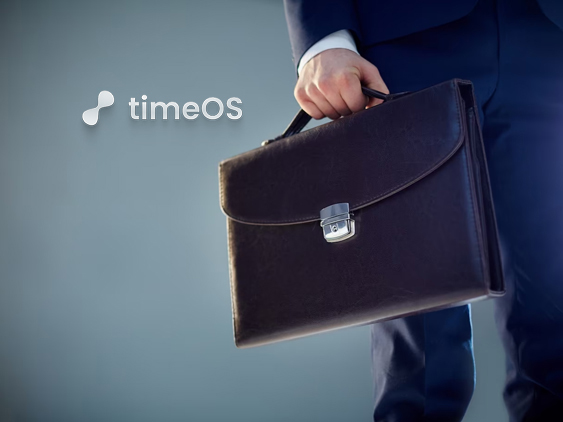timeOS Launches TimeAI to Inform Where Employees Should Spend Time and Where AI Can Do the Work For Them
The AI doppelgänger surfaces timely insights, reduces manual admin tasks, and replicates employee workflows
timeOS, the first-ever time aware AI technology, announced TimeAI, an all-in-one solution for AI-powered scheduling, note taking, and agendas that transforms a user’s calendar from a static tool into a conversational and ubiquitous assistant. Akin to a personalized ‘chief of staff’, TimeAI provides detailed context before, during, and after meetings to augment team decision-making, streamline workflows, and boost employee productivity.
Recommended HR Tech Article: Poor Work-life Balance and Career Disconnect Force Employees to Leave their Organization
Existing AI tools focused on meetings are glorified note takers. TimeAI goes far beyond anything currently in the market. The technology uses current and historic information available in your calendar as context to inform how you should spend your time and identify tasks that AI may be able to complete for you. From there, TimeAI steps in to attend the appropriate meetings and convey critical points to team members on your behalf. The solution also directs all action items where they need to go via a robust set of integrations with the communication and task management tools that users rely on most.
“It’s increasingly difficult to be present in today’s workforce, with meeting fatigue overtaking calendars and employees’ time being eaten up with menial tasks,” said Tommy Barav, CEO and Founder of timeOS. “Our proactive AI technology learns each user’s workflow, energy levels, and preferred meeting times, seamlessly enabling every employee to take hours back in their day and remain present in the work that fulfills them. At timeOS, we’re proud to be enhancing human abilities with time aware AI that provides the right information and support at the right time.”
A 30-minute meeting with three employees can cost anywhere from $700 up to $1,600, according to Shopify. If a C-suite executive joins, the cost jumps above $2,000. And that doesn’t even begin to factor in the amount of time employees spend post-meeting on follow up items and refocusing on primary tasks. TimeAI cuts down on unnecessary meeting attendance while also preventing employee context switching – the practice of quickly moving between unrelated tasks that not only negatively impacts productivity, but also takes a toll on employee mental well-being.
HR Technology News: Wade Marketing’s Independent Partnership Program Reveals the Identity of the NEW AGE Employee
TimeAI can send a customized avatar to absorb and analyze the information shared on an employee’s behalf. The technology also delivers context from previous meetings to ensure participants are more informed and engaged going into their next conversation. Additional capabilities include:
- Integration with any platform or interface: TimeAI is compatible with all popular communication platforms including Zoom, Google Meet, Microsoft Teams, Slack, and more. For holistic management support, the technology is also able to take actions from these environments and immediately translate them into Asana, ClickUp, or Monday.com items.
- Flexibility to serve both virtual and physical environments: TimeAI isn’t just for virtual meetings. Instead, the technology can capture everything that has been said in a physical room or a pop up meeting on Slack.
- Creation of tailored agendas and action items: Users can expect an automatic draft of human-level agendas in advance of meetings, as well as follow-up emails summarizing actions populated in the user’s native language. Taking this functionality one step further, TimeAI can also provide meeting summaries after an employee takes vacation or is out of office for extended periods of time so no context is lost.
- Analysis of action items: Creates notifications to signal which action is the most important to accomplish first.
“We have trained our models to aggregate behavioral data that helps users optimize the quality of their time unlike any other product on the market,” said Eilon Mor, CTO at timeOS. “The technology connects users to their current tools and replicates workflows in whatever language and format they prefer.”
Recommended: Understanding The State Of Cross-Functional Collaboration On Business Growth
[To share your insights with us, please write to sghosh@martechseries.com]

